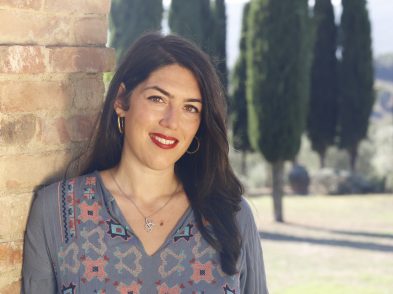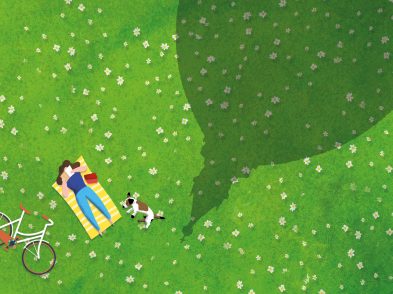A leisurely half-hour drive down the picturesque via Vecchia Aurelia and Strada Comunale di Montescudaio takes you from brassy Bolgheri to another brilliant wine region. Ribarbella sits prettily in the Pisa province, the town dating to 1034 and named after the sandy white tufa soil (“Ripa Albella” in Latin, meaning “white bank”).
Tuscan vinophiles might be more familiar with Montescudaio DOC, which celebrated its 50th wine festival this year, the appellation stretching from Santa Luce in the north to Casale Marittimo in the south. But a small group of producers is striving to pin Ribarbella permanently on the winemaking map.
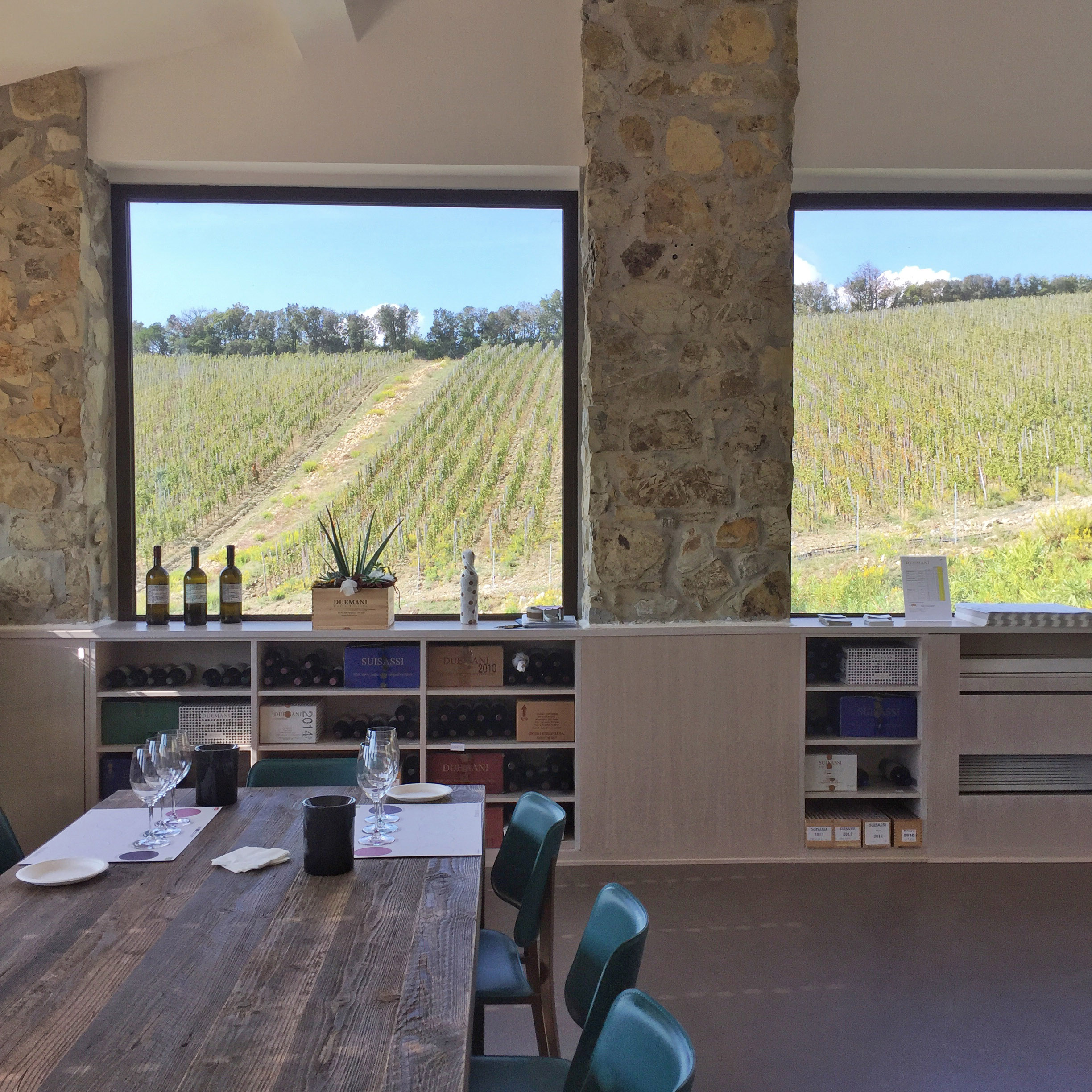
A cantina with a devoted following, Duemani lies at the end of a red earthen track off the provincial road SP13. Technically just over the border in Castellina Marittima, this biodynamic boutique winery still feels a deep connection with Riparbella, the location of its first vineyards. Husband-and-wife team Luca D’Attoma and Elena Celli started their “two-handed” operation in 2000, although D’Attoma’s experience extends much further: a former rugby player, he has lent a gentlemanly consulting hand at a host of Italian wineries, with foreign forays in Switzerland and Spain.
“It was love at first sight in Riparbella,” says Celli. “The area’s a bit on the wild side but bursting with integrity, its views ranging as far as the sea. You can make out Elba and even Corsica on a clear day.”
Energy pours from the fermentation area, the tried and tested nestled next to the experimental: from concrete tanks in eye-popping shades of pink, blue, green and orange and handwritten messages from wine lovers to terracotta jars from Chianti Classico’s Fontodi containing Cabernet Franc and Syrah. A sweeping expanse of the former wraps around two sides of the just-opened tasting room, a contemporary space with wide windows gazing out over the vines and a gilded picture frame peering into the barrique cellar.
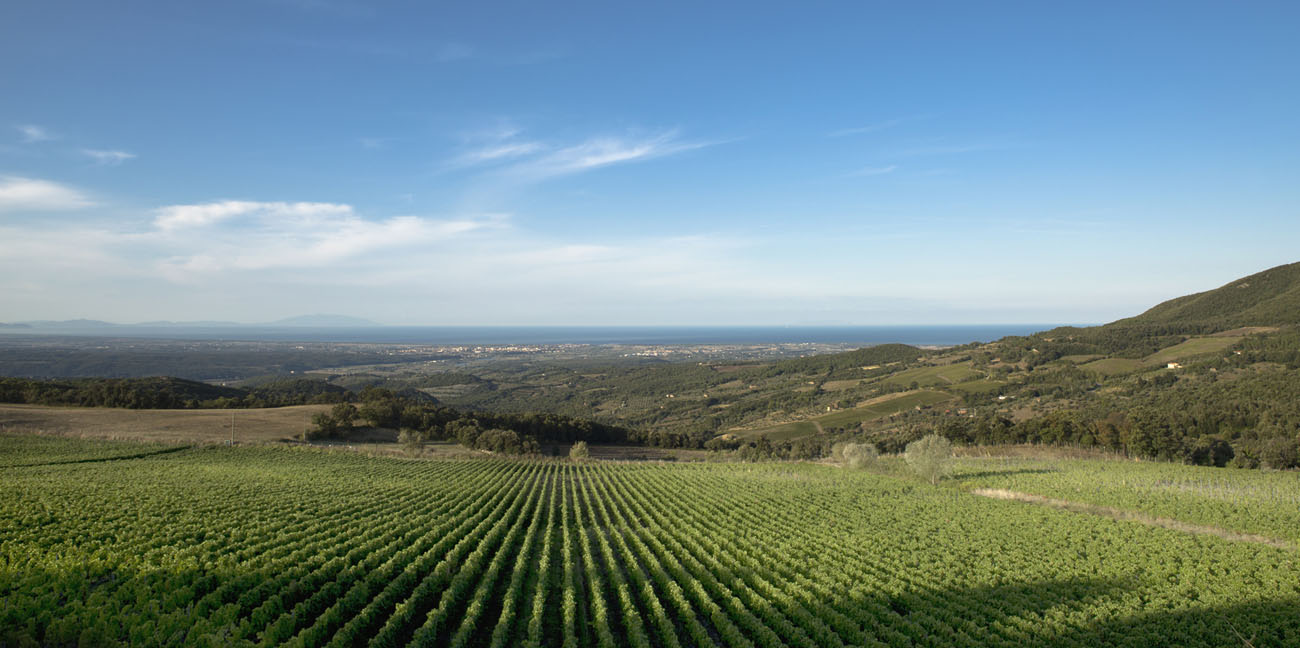
Virtually due east and 15 minutes away by car, feel the same sea breeze caress your soul at the highest vineyard along the Tuscan coast. Tenuta Prima Pietra affords spellbinding views of the Mediterranean on the horizon, while a single verdant vineyard sweeps beneath the winery. This was the first estate purchased by Massimo Ferragamo, who went on to invest in Brunello at Castiglion del Bosco, a 2,000-hectare property northwest of Montalcino.
“In 2002, I visited the Tuscan coast famous for its fine wines in search of the perfect place to craft my very own blend. I found it near Riparbella, on the highest hill along the coast. Elegance, attention to detail and quality, refined simplicity and a love of the land are the hallmarks of Prima Pietra, and pair with my sense of style too,” quips Massimo Ferragamo. On the farmhouse’s first floor a tasteful tasting lounge is slated to open in summer 2018.
Tenuta Prima Pietra: an organic winery with a sea view
The thriving vineyard of Tenuta Prima Pietra unfurls along a winding woodland road above the hillside town of Riparbella as a stylish wooden gate and stone sign announce the discreet entranceway.
2017 is the first year that Prima Pietra, an organic single-label wine, will have been harvested, vinified and refined on the Riparbella site, although the first vintage dates to 2007. The 2013 is a voluptuously fresh and fruity Merlot, Cabernet Sauvignon, Cabernet Franc and Petit Verdot blend, in which the sea breezes through, as if reclined on the beach at Marina di Bibbona on an early summer’s day.
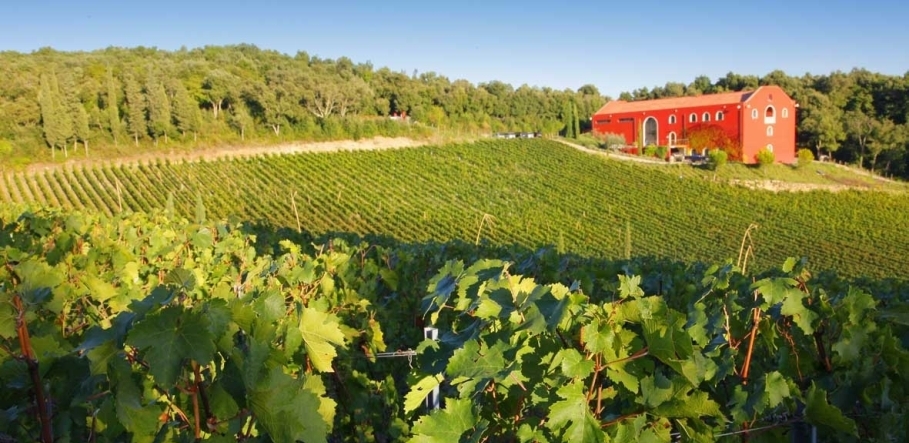
Another expanse of greenery awaits at Caiarossa. When former Belgian owner Jan Theys bought the original 30 hectares (now 70), he fenced them off and freed animals in the space to find the right place to build the cellar, as well as conducting soil analysis to establish the best varietals for the terroir. Today’s proprietor of Caiarossa, Dutchman Eric Albada Jelgersma, also owner of two châteaux in Bordeaux’s Margaux has continued the same Feng Shui principles, while raising the quality to its current apex, since taking over the red-painted and red soil winery since 2004.
Surrounded by Mediterranean brush shielding the vines from the north winds, nature-first is the philosophy employed at this biodynamic winery through green manuring and algae and propolis treatments. The cellar captivates on the inside with the yellow, light-filled vertical, gravity-led fermentation area also abiding by Feng Shui principles, extending down into the barricaia with its natural ventilation circling through conduits and pebble features concealing copper filaments that eliminate negative energy.
Sangiovese, Merlot, Cabernet Franc, Cabernet Sauvignon, Petit Verdot, Alicante and Syrah are blended Bordeaux-style to make supremely sensuous reds, such as the audacious namesake seven-varietal Caiarossa and second vin Aria di Caiarossa, a rounded and refreshing red with a generous spiciness thanks to the Syrah.
Sun-kissed not sunburnt, breezy not windblown, fresh, fruity and essentially nature concentrated in a glass: the wineries of Ribarbella have much to offer all year round, especially when the mist clears on a crisp autumn day and the views stretch as far as the sea.


